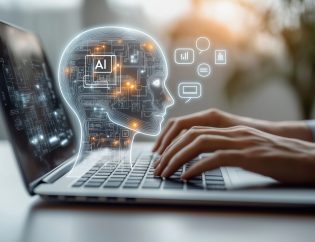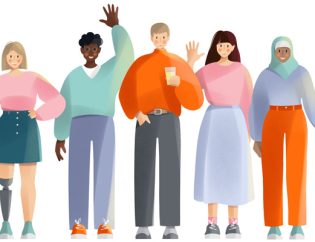Today’s workforce is more diverse than ever, especially in terms of age. Organizations now have the unique challenge and opportunity to harness the potential of a multigenerational workforce, ranging from seasoned Baby Boomers to the emerging Gen Z.
This diversity brings a rich blend of experiences, perspectives, and skills, crucial for fostering innovation and adaptability in a competitive business environment.
In firstPRO we have developed robust strategies to help organizations capitalize on this diversity, and improve it. Leveraging their extensive experience across various sectors, we expertly facilitate intergenerational collaboration, ensuring that companies are well-equipped to blend the strengths of each generation.
Understanding generational differences
Here’s a deeper look into the key traits and potential challenges that might arise among the different generations in the workplace.
Baby Boomers (Born 1946-1964):
Baby Boomers tend to value stability, hard work, and loyalty. They often prefer structured environments and may prioritize professional accomplishments. As the first generation to grow up in a post-war world, they are accustomed to face-to-face communication and traditional media.
Generation X (Born 1965-1980):
Gen Xers are known for their strong sense of independence and skepticism towards authority. They value work-life balance more than their predecessors and are highly adaptable. This generation witnessed the rise of personal computing, which makes them comfortable with both old and new technologies.
Millennials (Born 1981-1996):
Millennials are the first digital natives and are accustomed to fast-paced, technology-driven environments. They value flexibility, opportunities for career advancement, and purpose in their work. Millennials prefer collaborative work cultures and are keen on receiving regular feedback.
Millennials (Born 1981-1996):
The most recent to enter the workforce, Gen Z values authenticity, technology integration, and social impact. They seek independence in their work yet look for opportunities to learn and advance quickly. Gen Z is highly connected through digital platforms and values personal expression and mental health.
Potential Sources of Conflict and Misunderstanding
The distinct characteristics of each generation can sometimes clash in the workplace, leading to potential conflicts and misunderstandings:
Work Expectations:
Gen X values autonomy and may be frustrated by the collaborative approach favored by Millennials, who thrive on teamwork and constant connectivity.
Baby Boomers may have different expectations for work ethics and commitment, potentially perceiving younger generations as less dedicated.
Adaptation to Technology:
While Gen Z and Millennials are quick to embrace new technologies, Baby Boomers and Gen X may require more time or training, which can lead to frustrations if not managed with sensitivity and understanding.
Feedback and Recognition:
Millennials and Gen Z often seek immediate feedback and recognition, which can be seen as needy or lacking resilience by Baby Boomers and Gen X, who are accustomed to more traditional, periodic review processes.
Values and Motivations:
Gen Z places a high value on diversity, equity, and inclusion, and may expect these principles to be deeply embedded in their company culture, which might differ from the priorities or experiences of older generations.
Strategies for engaging and retaining a multigenerational workforce
Each generation has distinct preferences that can be accommodated to enhance understanding and cooperation:
Baby Boomers often appreciate formal communication and traditional feedback mechanisms, such as in-person meetings and written evaluations.
Generation X values clear, direct communication without micromanagement. They prefer to receive feedback through one-on-one meetings where practical and constructive criticism is offered. Baby Boomers and Generation X might prefer more structured learning environments, such as workshops and seminars.
Millennials thrive on digital communication tools and favor continuous feedback rather than waiting for annual reviews. Incorporating regular check-ins using communication platforms can engage this group effectively. Millennials often seek opportunities for growth that are collaborative and technology-based, like online courses or virtual reality simulations.
Generation Z seeks instant and constant feedback accessible through mobile and digital mediums. They appreciate visual and interactive forms of communication, such as video messages. This generation values on-demand learning accessible through mobile devices and appreciates platforms that allow them to learn at their own pace.
Mentoring programs that pair younger employees with more experienced colleagues can facilitate mutual learning and respect. Reverse mentoring can be particularly effective, where younger employees mentor older colleagues in areas like technology and social media, while older employees share their expertise in industry knowledge.
Creating a culture that actively promotes inclusivity and respect is essential for a multigenerational workforce:
Develop policies that are explicitly inclusive, recognizing the varied needs and contributions of all age groups. This includes flexible working arrangements that cater to different life stages and career phases.
Hold regular training sessions on topics such as unconscious bias and generational differences to increase awareness and understanding among employees.
Celebrate diverse perspectives in company meetings and through internal communications to reinforce an inclusive culture.
Navigating the complexities of a multigenerational workforce is essential for organizations aiming to thrive in today’s dynamic business environment.
The strategies discussed are essential in creating a workplace that values diversity and promotes unity. Adapting communication methods to meet generational preferences ensures that all employees feel heard and valued, while providing varied training methods addresses different learning styles and keeps employees engaged and capable.
Cultivating an environment that celebrates all generations supports a more collaborative and innovative team dynamic. Organizations that successfully manage generational diversity gain several competitive advantages:
Enhanced Innovation
Different perspectives lead to more creative solutions, driving innovation throughout the organization.
Increased Retention
When employees feel respected and valued, regardless of their age, retention rates improve, reducing turnover and the associated costs.
Broader Skill Set:
A multigenerational workforce brings a wide range of skills, providing a more robust resource pool.
Improved Decision Making:
Diversity in thought and experience leads to more comprehensive decision-making processes and outcomes.









